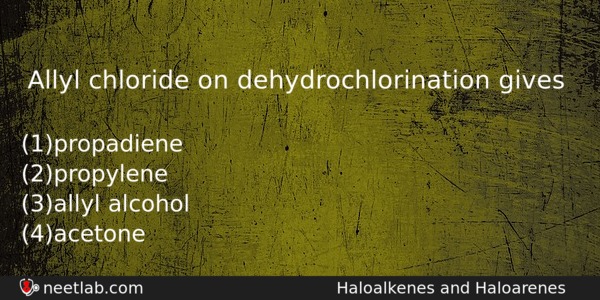| ⇦ | 
| ⇨ |
Allyl chloride on dehydrochlorination gives
Options
(a) propadiene
(b) propylene
(c) allyl alcohol
(d) acetone
Correct Answer:
propadiene
Explanation:
No explanation available. Be the first to write the explanation for this question by commenting below.
Related Questions: - The volume occupies by one molecules of water is [density of water =1g/cm³
- CuSO₄ dissolves in NH₃ due to the formation of
- Which of the following is currently used as a tyre cord
- Electrolytic reduction of nitrobenzene in weakly acidic medium gives
- During the electrolysis of H₂O, volume of H₂ and O₂ are released in the ratio
Topics: Haloalkenes and Haloarenes
(78)
Subject: Chemistry
(2512)
Important MCQs Based on Medical Entrance Examinations To Improve Your NEET Score
- The volume occupies by one molecules of water is [density of water =1g/cm³
- CuSO₄ dissolves in NH₃ due to the formation of
- Which of the following is currently used as a tyre cord
- Electrolytic reduction of nitrobenzene in weakly acidic medium gives
- During the electrolysis of H₂O, volume of H₂ and O₂ are released in the ratio
Topics: Haloalkenes and Haloarenes (78)
Subject: Chemistry (2512)
Important MCQs Based on Medical Entrance Examinations To Improve Your NEET Score
18000+ students are using NEETLab to improve their score. What about you?
Solve Previous Year MCQs, Mock Tests, Topicwise Practice Tests, Identify Weak Topics, Formula Flash cards and much more is available in NEETLab Android App to improve your NEET score.
Share this page with your friends

Dehydro chlorination means one hydrogen and one chlorine is removed from the allylic carbon so two double bond is formed between the two carbon and propadiene is formed
Dehydrochlorination means removal of one hydrogen and one chlorine.. So double bond is formed in between the carbon atom
CH2=C-C-Cl—-C=C=C